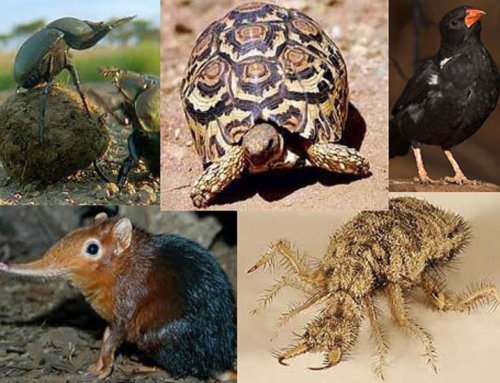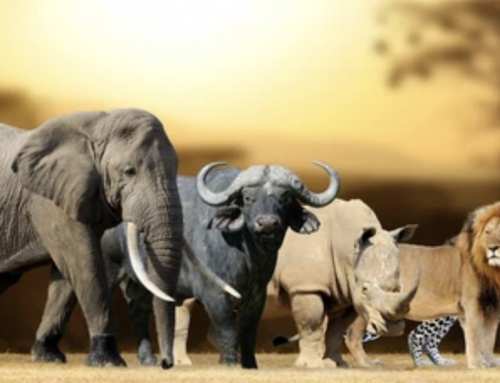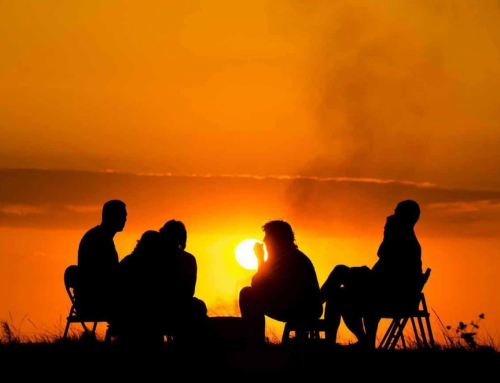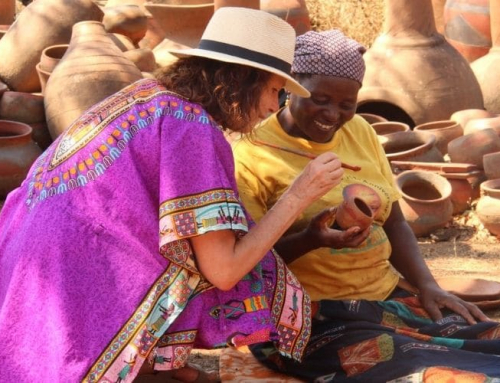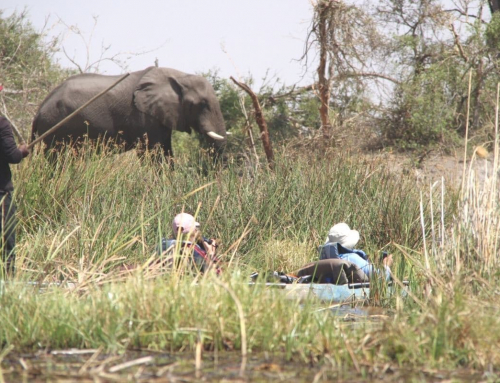
You have booked or planning a safari in Africa, but you are concerned there are snakes, lots of them right? Should you be concerned or even take the risk?
Snakes are amazing creatures and sightings of them are special, extremely rare, and a real privilege to observe in the wild, and nothing really to be worried about.
There is a huge assumption that Africa is ‘full’ of snakes; and dangerous ones at that! Here, we are going to explore this myth and get some facts on snakes in Africa and tips on how you can stay safe while on safari.
South Africa is home to about 151 species of snake (Snakebite Institute). In fact, being one the world’s biodiversity hotspots, the reptile taxa is no exception to this with about 517 reptile species recorded in the region and with 151 species of these being snakes, this area is rich in snake diversity. As a comparison the UK has 6 native species of reptiles and three of those are snakes!
For those people who live in urban environments or non-tropical areas, the likelihood of seeing a wild snake is very slim. So when you think about entering a country with such prolific snake diversity it is easy to assume you will be tripping over the things!
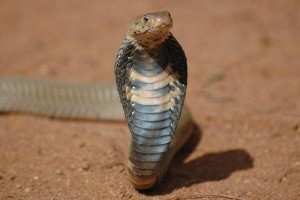
Photo Credit: Kelly Abram – Mozambique Spitting Cobra
But, sadly, for the snake lovers, this will not be the case, even in areas with lots of snakes. This is because snakes are actually very timid and shy creatures. In fact, snakes are important prey species for many species of mammals and birds and therefore to survive must hide and remain as inconspicuous as possible; in order to not be eaten. Furthermore, the innate fear many people have towards snakes usually means they are persecuted indiscriminately and killed by humans if they are seen. So snakes’ survival relies on staying hidden, and/ or camouflaged. If they detect the presence of predators or humans they will try and move away quickly and quietly without being detected.
Snakes actually are amazing creatures. They are so well adapted to the environment they live in, have a critical ecological role to play, and are important indicators of healthy ecosystems. Snakes are critical for controlling pest populations for example. If tomorrow, you woke up and all snakes ceased to exist, there would be extreme consequences that would soon follow. Many animals that are considered ‘pests’ would soon have population booms and wouldn’t be able to be kept in check, creating huge consequences for us humans in terms of food security, disease and damage to property (such as the mouse plagues experienced in Australia in recent years). They are fascinating too, and a privilege to see in the wild because seeing them is actually quite rare, because of their cryptic, secretive and some, their nocturnal behaviour.
While most snakes are technically venomous to the prey they eat, very few in fact have venom that is medically significant to humans. [Venomous is when a toxin gets into the body via injection (snakebite) compared to poisonous which is when a toxin gets into the body via ingesting]. This is because we are so much larger than a mouse or frog. Out of 151 species of snakes in South Africa about 16 species have venom that are medically significant for humans if they get bitten. Of these 16 species (you would want to seek medical attention for any snake bite to check it out – just in case), in my opinion – only 3 species, the Black Mamba, Green Mamba and Cape Cobra are seriously life threatening, in that time is critical to get a snake bite victim to medical care and there is a high risk of the bite being fatal. A further ten or so are medically significant, in that you want to get to medical help as quickly as possible as these are painful bites and the quicker you seek medical help the more likely you can limit symptoms and complications from the bite site. However, three of these species – the Boomslang and Twig Snake species (2) rarely bite. So out of the 151 snake species only a handful are dangerous to people and the likelihood of coming these species while on safari are very rare.
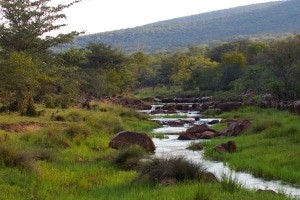
Photo Credit: Kelly Abram – Waterberg Landscapes – A Verdant River Valley
The good news with snakes is, it is fairly easy to stay safe while being in their environment. The number one rule to stay safe though – is to leave them alone! Do not pick up a snake or handle a snake even if you think you know what species it is.
Most snake bites actually happen through picking up or handling snakes! If you see a snake (on a walk and are concerned) while in the bush it is best to move away from it and let it be. It will probably detect your presence and move away. The worst thing to do is to try and kill the snake. One because obviously that is not good for the snake, but two trying to kill a snake puts you in close contact with the snake and if it is being threatened it will act defensively and strike out creating a dangerous situation.
If you see a snake in your room/ lodge/ or around buildings tell someone, a staff member of a lodge, your guide is a good person (as they should be able to identify the snake) and then they will deal with the snake (hopefully catch it safely and release it).
While these are the main ways to stay safe there are some other ‘common’ sense rules. Don’t put your hands (or feet) into holes or places you can’t see, don’t walk where you can’t easily see where you put your feet (tall grass, deep leaf litter). When stepping over logs/ objects etc make sure you can step far from the item and don’t expose your ankle or lower leg to the front of the log where you can’t see, maybe better still walk around objects.
If you startle a snake, keep calm and move slowly away from it. Don’t corner or appear threatening to the snake. Again most bites happen when the snake feels threatened and the best way to threaten a snake is to try and catch it!
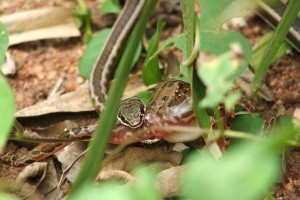
Photo Credit: Kelly Abram – Yellow Bellied Sand Snake peeking out from the grass
Snakes do not want to bite something (a human) that is not food. Because injecting venom through a defensive bite might mean it does not have enough venom left over to be able to immobilise its prey to eat. In some cases this could be the difference between life and death for the snake.
Keep aware. The easiest way to stay safe is to be aware of your surroundings and keep a (calm) eye out for snakes (paranoia not needed!). That way you should be able to spot a snake long before you are too close to it.
Snakes also give warning signals – if you are paying attention to your surroundings. A puff adder will make a ‘hiss’ noise by rubbing its scales together, and a cobra will rise up and flare its hood.
But sometimes keeping still and not moving (not panicking) can be best. The best example I have was with a very rare occasion where we were lucky enough to have a snake sighting. It was about ten years back and I was hosting a group of foreign tourists (mostly British) on a volunteer holiday. It was lunch time and we were sitting having lunch quietly in the shade of a tree. The volunteers all sat on chairs in a line and I was sitting at a right angle to them with a view behind them all. In the corner of my eye I spotted a medium sized (1.5m) snouted cobra approaching our direction and making its way to move under the volunteers’ chairs they were sitting on. I had no time to scare the snake off and its closeness meant it was most likely strike out in defence. So I said “DO NOT MOVE. Keep completely still!” Thankfully the volunteer tourists did exactly that, even without knowing why (it is always good practice to do exactly what you guide tells you). I then said “there is a snake coming under your chair but you must stay perfectly still and it will just move past you”.
You can speak as loud as you want around snakes as their main hearing ability is through vibrations they pick up from the ground via their muscles. So talking would not disturb or scare the snake.
The snake slowly went under one chair and came out about 20cm from a ladies foot who was sitting in the chair. It carried on moving forward and went behind the tree we were sitting by without any incident. Through it all everyone sat still and quiet and the snake never knew we were all there (6 people).
The lady that had the closest encounter with the snake only admitted to me at the end of her trip that she’d had a phobia of snakes and was really unsure about coming to Africa on this trip. However, by the end of her trip and having seen snakes in the wild, seen how they behave (timid) and that they were not out to chase and bite people, she told me her snake phobia had been cured! (She had been in South Africa for 14 weeks and had been very lucky to see quite a few snakes).
Snakes are amazing creatures and if you come to Africa on an Alexandra’s Africa Safari – sightings of them are as special and rare as other ‘African’ safari species (in my opinion), and a real privilege to observe in the wild, and nothing really to be worried about. So go ahead and book that safari. You will not be sorry and who knows you might be lucky enough to see a snake or two 😉
Written by Guest Blogger: Kelly Abram

Banner Photo Credit: Kelly Abram – Waterberg Landscape a View Across Waterberg Mountains


